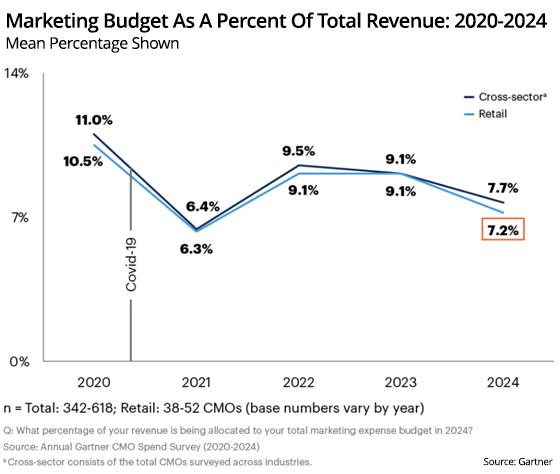
Marketers are paying little attention to Chinese factories
flooding TikTok with videos urging Americans to buy direct from them to bypass U.S. President Trump’s tariffs.
In one video a man stands on a factory floor claiming
to have access to manufacturers that produce Louis Vuitton bags, which he says can be sold direct to customers for $50. But that's typically the dollar amount for fake designer bags sold on the
streets of Los Angeles and New York.
Gartner Senior director Analyst for Marketing Kassi Socha said marketers, specifically across luxury brands, entered 2025 with smaller marketing
and ad budgets compared with 2024. She said CMOs need to understand consumer sentiment and shift advertising.
Consumer behavior has become more difficult to read. Consumers “were already
concerned about rising prices, but tariffs will compound that concern,” Socha said. “The most successful organizations will figure out how to share the costs from tariffs with
customers.”
advertisement
advertisement
The National Retail Federation (NRF) today forecast that retail sales during 2025 will grow between 2.7% and 3.7% compared with 2024 to between $5.42 trillion
and $5.48 trillion, despite economic uncertainty.
The NRF suggests that although consumer confidence is declining, due largely to lingering inflation and consumers’ anxiety over
tariffs, it doesn’t mean the industry will see an immediate drop in consumer spending.
Socha said successful brands will fall back on strategies used during COVID to prioritize
performance tactics. Many will adapt to tariffs by shifting to real-time and value-based messaging, highlighting "tariff-free" pricing and emphasizing the benefits of American-made
goods.
Price changes related to luxury handbags or clothes and electronics might take a bit more time to feel the price hikes. When consumers start to experience price changes, they
typically trade down in their purchases. Rather than purchase a $4,200 Louis Vuitton handbag they might buy a wallet or a preowned bag. Many retailers from Canada Goose to Coach have secondhand
programs.
Messages are changing in campaigns. Marketers are using modular structures and real-time data analysis to adjust messaging and budget allocation. For brands that can, I have
seen companies exemplify “Made in America” messages or “We have better service.”
Pricing and value messages will become prevalent.
“During the past few
years we’ve seen a pullback in marketing spend, but the percentage of budget to paid media has risen,” Socha said. “Marketers are making hard choices on whether to invest in
agencies, labor and technology or as many dollars as possible in performance marketing.”
Performance marketing has been maintained and investment in conversion to sales with a reduction
in driving brand awareness in retail.
Generative artificial intelligence (GAI) has become a benefit to retail, from advertising efficiencies to helping with workflows. Retailers have pointed
to efficiencies in performance spend for advertising, media and ad creation.
Socha stopped short of tying AI to a strategy to offset tariffs, but did say there will be many ways retailers will
offset rising supply chain costs that tariffs might impact.
Gartner has seen a reduction in advertising on TikTok year-over-year, but has not conducted an analysis or study on that side of
direct-to-consumer marketing. Socha did not mention a correlation between money spent for marketing and advertising on the social platform and tariffs.